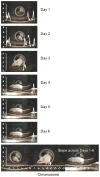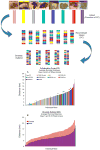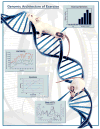Genetic determinants of voluntary exercise
- PMID: 23351966
- PMCID: PMC3665695
- DOI: 10.1016/j.tig.2012.12.007
Genetic determinants of voluntary exercise
Abstract
Variation in voluntary exercise behavior is an important determinant of long-term human health. Increased physical activity is used as a preventative measure or therapeutic intervention for disease, and a sedentary lifestyle has generally been viewed as unhealthy. Predisposition to engage in voluntary activity is heritable and induces protective metabolic changes, but its complex genetic/genomic architecture has only recently begun to emerge. We first present a brief historical perspective and summary of the known benefits of voluntary exercise. Second, we describe human and mouse model studies using genomic and transcriptomic approaches to reveal the genetic architecture of exercise. Third, we discuss the merging of genomic information and physiological observations, revealing systems and networks that lead to a more complete mechanistic understanding of how exercise protects against disease pathogenesis. Finally, we explore potential regulation of physical activity through epigenetic mechanisms, including those that persist across multiple generations.
Copyright © 2013 Elsevier Ltd. All rights reserved.
Conflict of interest statement
There are no conflicts of interest.
Figures




References
-
- Bramble DM, Lieberman DE. Endurance running and the evolution of Homo. Nature. 2004;432:345–352. - PubMed
-
- Lieberman DE, Bramble DM. The evolution of marathon running: capabilities in humans. Sports Med. 2007;37:288–290. - PubMed
-
- Iwaniuk AN, et al. Do big-brained animals play more? Comparative analyses of play and relative brain size in mammals. J Comp Psychol. 2001;115:29–41. - PubMed
-
- Fox J. The ball. Harper Collins Publishers; 2012.
-
- Kelly SA, Garland T., Jr Phenotypic plasticity and experimental evolution. J Exp Biol. 2006;209:2344–2361. - PubMed
Publication types
MeSH terms
Grants and funding
LinkOut - more resources
Full Text Sources
Other Literature Sources
Medical

